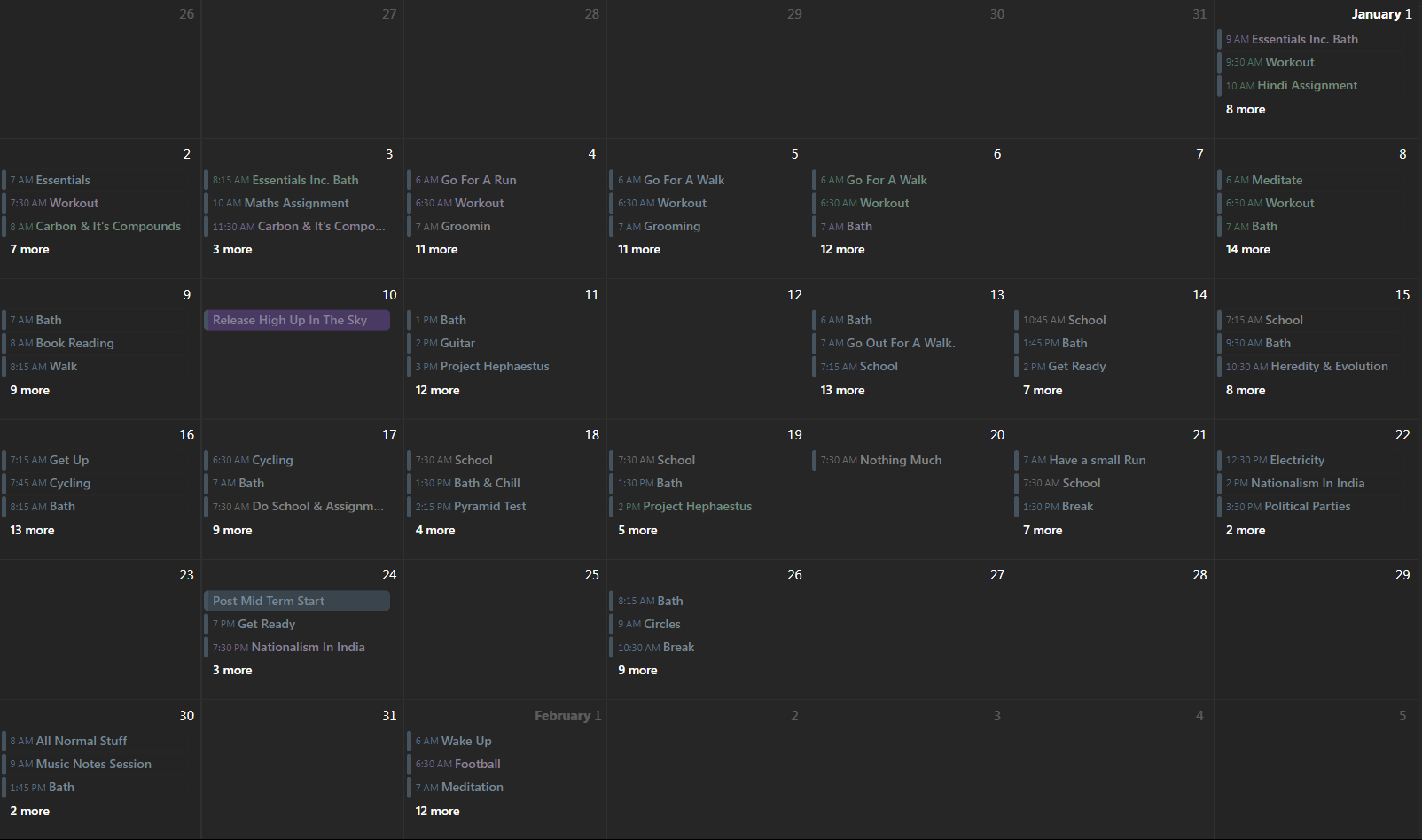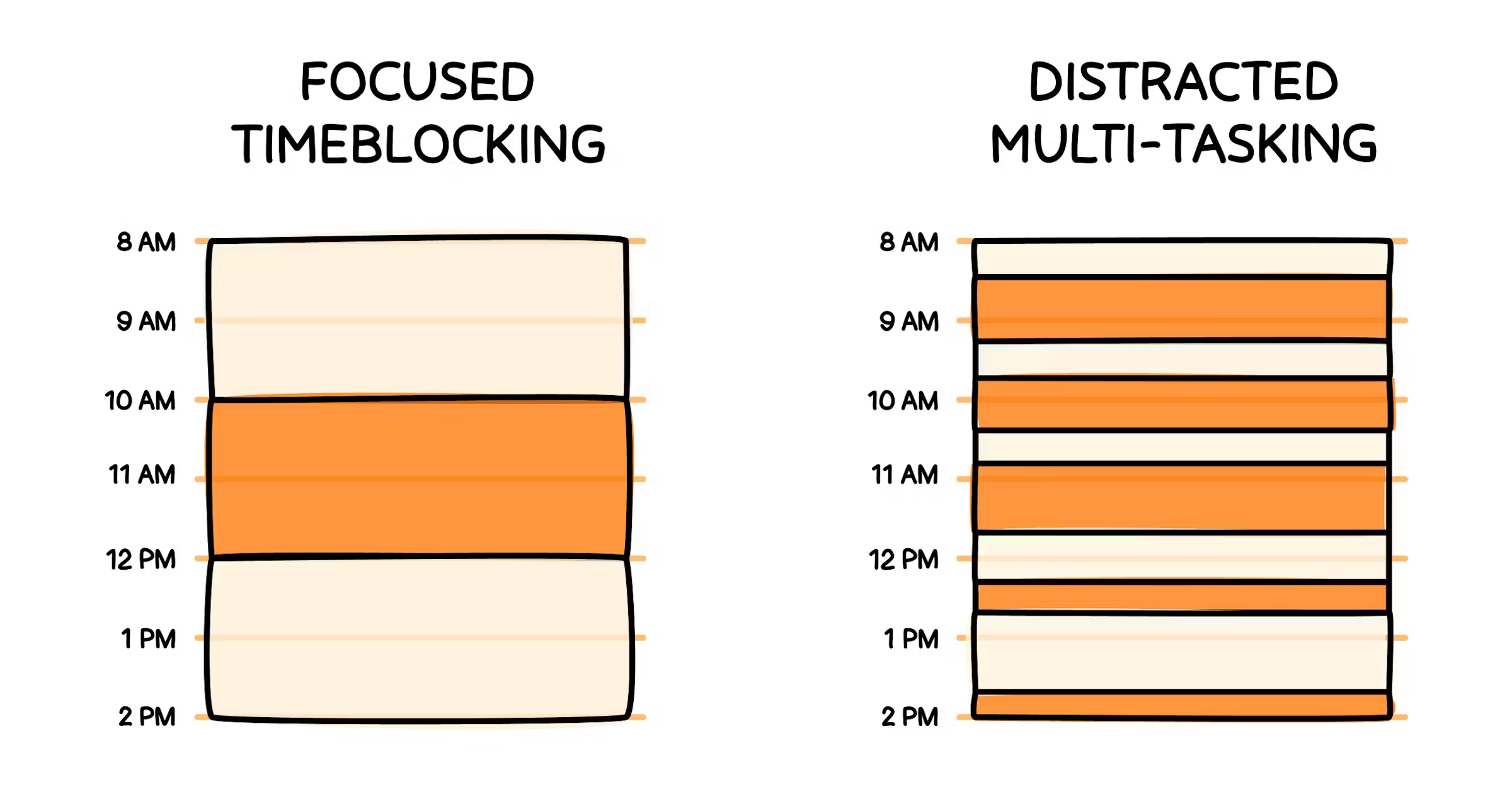
Timeblocking 101: The Ultimate Guide to Structuring Your Day
Timeblocking is more than just a buzzword—it's a proven technique to reclaim control over your day and boost your productivity. In this ultimate guide, we dive deep into the art of structuring your day using timeblocking. Whether you're juggling multiple projects or simply trying to focus on the tasks that truly matter, mastering timeblocking can transform your daily routine. And with intuitive platforms like MindFlow, integrating these techniques becomes effortless.
What is Timeblocking?
Timeblocking (also known as time chunking) is a time management strategy where you divide your day into dedicated blocks for specific tasks or activities. Instead of a never-ending to-do list, your calendar becomes a visual roadmap of focused work sessions, breaks, and transitions.
Learn more about the concept on Wikipedia: Timeblocking.
Key Characteristics:
- Focused Intervals: Allocate a set amount of time for each task.
- Scheduled Breaks: Include downtime to recharge your energy.
- Clear Boundaries: Reduce multitasking by dedicating blocks solely for single tasks.
Why Timeblocking Works
Timeblocking works because it leverages the brain's natural focus cycles. By committing to a block of uninterrupted work, you minimize distractions and maximize efficiency. Here are some benefits:
- Enhanced Focus: Working in dedicated blocks helps you achieve deep work states.
- Reduced Decision Fatigue: With your tasks pre-scheduled, you spend less time deciding what to do next.
- Improved Energy Management: Regular breaks prevent burnout and sustain high energy levels throughout the day.
- Visual Clarity: Your calendar becomes a clear visual representation of your priorities and progress.

How to Implement Timeblocking in Your Daily Routine
Follow these steps to start timeblocking and revolutionize your daily structure:
1. Plan Your Day the Night Before
Spend 10–15 minutes each evening to outline your next day. List your tasks and assign them to specific time blocks. This simple habit sets the stage for a productive day.
2. Use a Digital Calendar
Utilize a digital calendar (Google Calendar, Outlook, etc.) to schedule your blocks. Platforms like MindFlow integrate seamlessly with digital calendars, making it easy to visualize your day and adjust on the fly.
3. Define Your Task Blocks
Break your day into segments:
- Deep Work Sessions: 60–90 minutes of focused work (e.g., project development, writing, or analysis).
- Administrative Tasks: 20–30 minutes for emails, calls, and routine updates.
- Breaks & Recovery: Short 5–15 minute breaks between sessions and a longer lunch break to rejuvenate.
For example:
- 8:00 AM – 9:30 AM: Deep work (focus on high-priority projects)
- 9:30 AM – 9:45 AM: Quick break (stretch, hydrate)
- 9:45 AM – 10:15 AM: Administrative tasks (emails, quick calls)
- ...and so on.
4. Stick to the Schedule
Once your blocks are set, do your best to adhere to them. Adjustments are natural, but maintaining a consistent routine is key. Use MindFlow’s intuitive interface to track your progress and make on-the-go changes without disrupting your workflow.
5. Review and Reflect
At the end of each day, review your accomplishments. What worked? What needs adjustment? This reflection helps refine your timeblocks and ensures continuous improvement.
Best Practices & Expert Tips
Establish Buffer Times
Allow short transition periods between blocks. This helps ease the mental shift from one task to another and prevents the feeling of being rushed.
Prioritize Your Tasks
Start with the most important task during your peak energy period. Prioritization is crucial—remember, the goal is to work smarter, not harder.
Embrace Flexibility
While structure is important, allow room for unexpected tasks or moments of inspiration. Platforms like MindFlow encourage a balance between rigid scheduling and adaptable planning.
Minimize Distractions
Turn off non-essential notifications and create a dedicated workspace. The more you shield your time blocks from interruptions, the more productive you’ll be.
For additional insights on productivity strategies, check out Getting Things Done by David Allen.
Integrating MindFlow into Your Timeblocking Strategy
With MindFlow, timeblocking isn’t just another task—it becomes a seamless part of your daily routine. MindFlow’s clean, user-friendly interface allows you to:
- Easily schedule and adjust your time blocks.
- Visualize your day with a dynamic, interactive calendar.
- Track progress and reflect on your productivity with insightful analytics.
MindFlow works passively in the background, helping you stay organized without the constant need for manual updates. Whether you’re a freelancer, a manager, or a creative professional, MindFlow’s timeblocking features are designed to boost your efficiency.
Success Stories
Consider Jane, a freelance writer who struggled with distractions and missed deadlines. After switching to a timeblocking approach using MindFlow, she restructured her day into clear work sessions and breaks. The result? A 40% increase in productivity and a newfound balance between work and personal time.
“I never knew how much time I was wasting until I started timeblocking. With MindFlow, my day is now a well-oiled machine, and I finally have time for creativity and relaxation.”
– Jane D.
Conclusion
Timeblocking is a powerful, yet simple method to regain control over your day. By breaking your schedule into dedicated blocks, you not only enhance your focus but also create a realistic, manageable plan for your tasks. Incorporating tools like MindFlow into your routine can streamline this process, making it easier to stick to your schedule and continuously improve your productivity.
Start small, review your progress, and watch your efficiency soar. It’s time to take back your day—one block at a time.
Related Resources:

